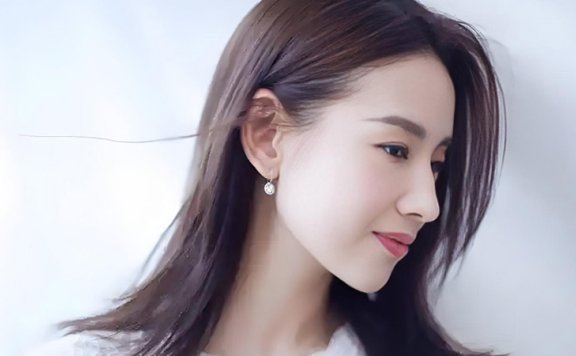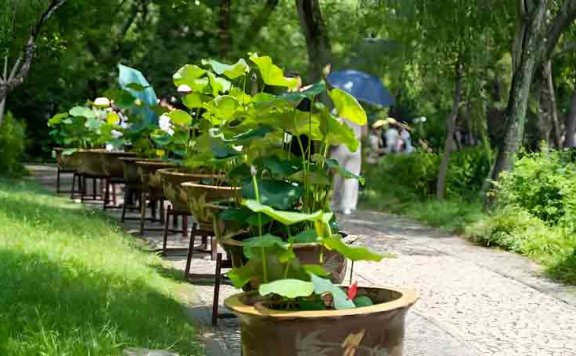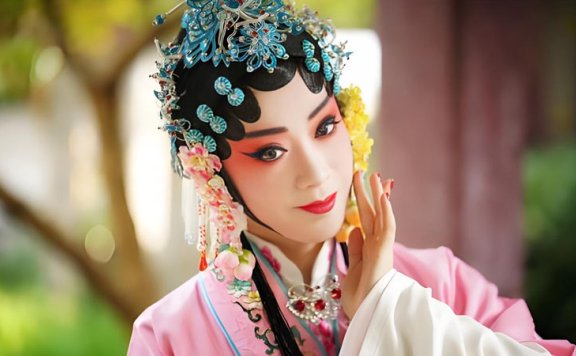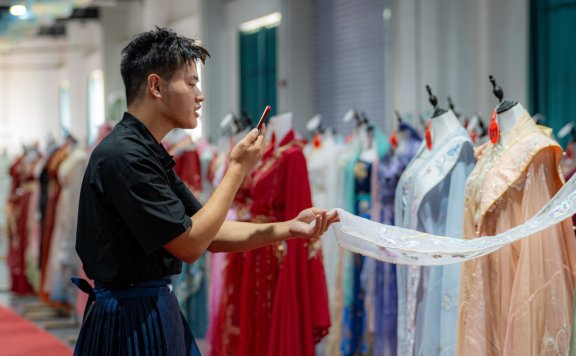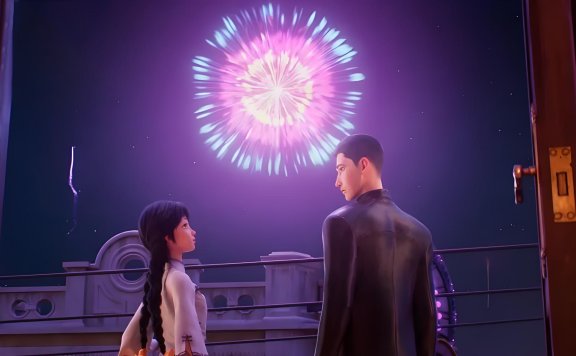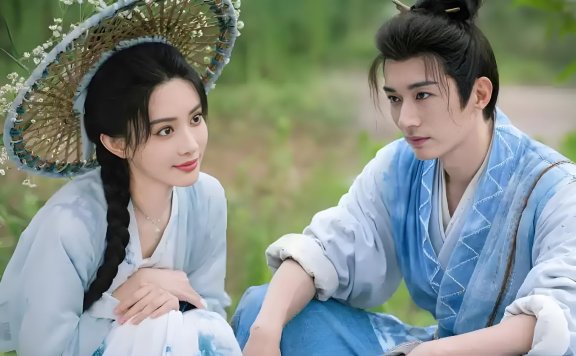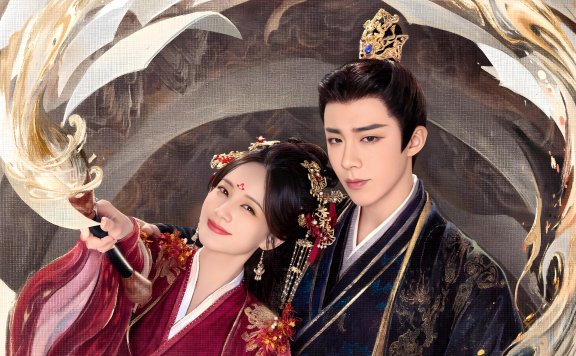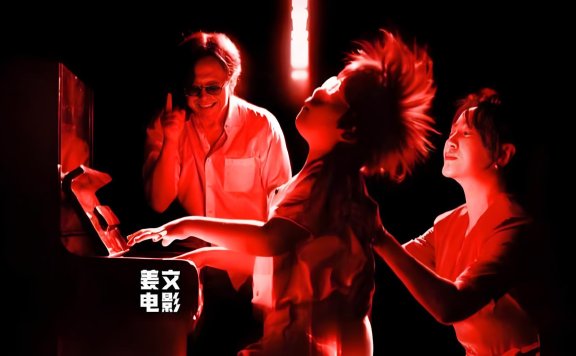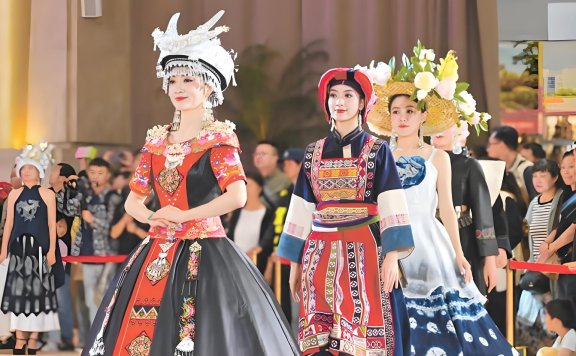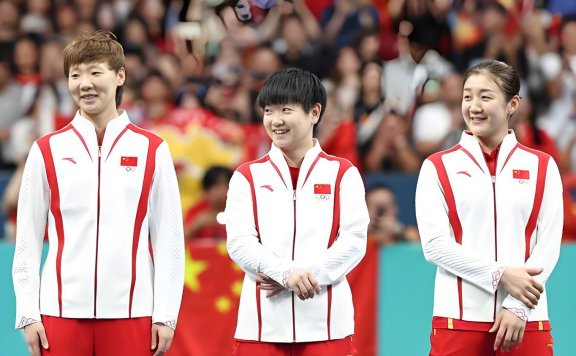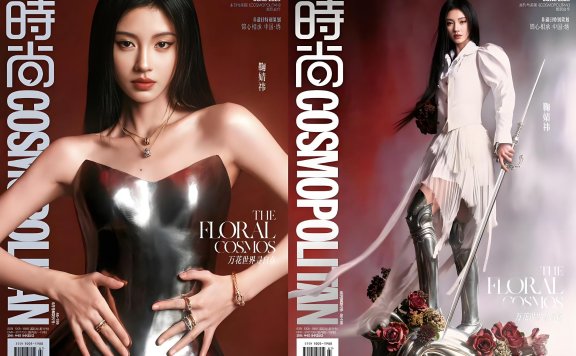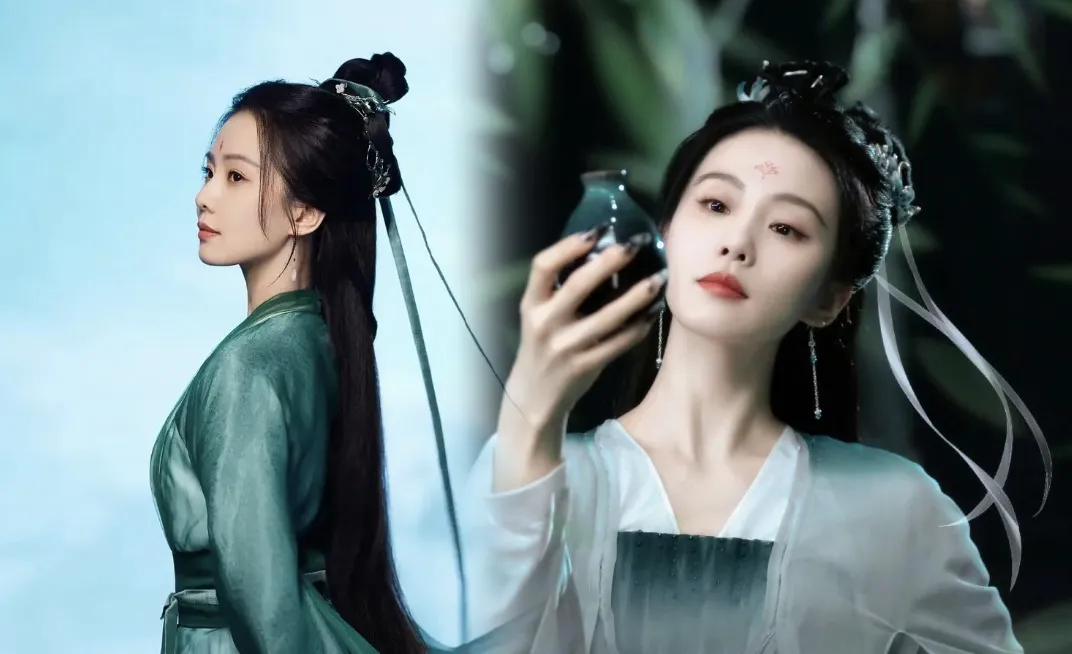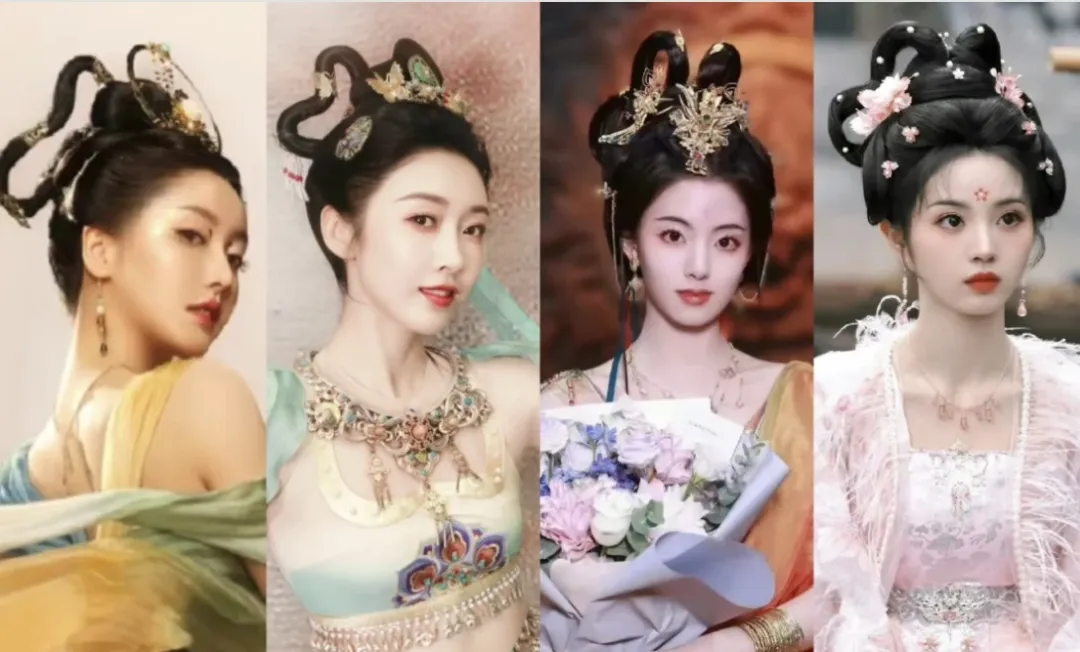Article
搜索结果:
-
Dong Jie’s Second Act Beyond the Silver Screen
The spotlight shifts from film sets to clothing racks as 45-year-old actress Dong Jie (董洁), once the nation’s beloved "Cold Girl" fromThe Golden Era, embarks on an unexpected entrepreneurial journey. Recent candid photos reveal her meticulously arranging garments in a soon-to-open boutique in Hebei—a quiet yet powerful declaration of her new identity beyond acting. This unscripted career pivot, stripped of celebrity pretense, showcases resilience forged through personal and professional storms. From Camera to Clothing Rack Dong Jie’s transition from acclaimed actress to fashion entrepreneur defies the typical celebrity endorsement path. Photos captured by customers reveal her scrutinizing fabric textures and adjusting displays with artisan-like precision. Dressed in minimalist white cotton and denim, her effortless grace mirrors the aesthetic philosophy of her brand: understated luxury anchored in craftsmanship over ostentation. Her career’s trajectory reads like a screenplay itself—meteoric fame via iconic roles, followed by a devastating fall from grace during a tumultuous divorce and scandal. The ensuing years saw her retreat from public life, with brief attempts at resurgence, like 2023’s Sisters Who Make Waves, yielding muted applause. Acting’s instability ultimately steered her toward fashion, where control replaces casting calls. The seeds of this reinvention were sown during 2022 lockdowns, when… -
A Summer Drama of Heritage Blooms in Suzhou
Suzhou’s classical gardens, timeless havens of tranquility, transform each summer into vibrant stages celebrating nature’s artistry. This year, the Humble Administrator’s Garden, a UNESCO World Heritage site, unveils a particularly spectacular dual performance. By day, its pavilions and waterways become the canvas for the grandest exhibition of potted lotus in its history, a breathtaking "Summer Lotus Scroll" showcasing the floral heritage of China. By night, the ancient stones and waters shimmer under an innovative lightscape, offering a mesmerizing journey where tradition meets cutting-edge artistry. Together, these events weave a captivating narrative of preservation, innovation, and living culture, inviting visitors to experience the garden’s soul in two distinct, unforgettable acts. Nature's Living Masterpiece The "Rhyme of Jiangnan: Humble Administrator’s Gathering" National Potted Lotus Exhibition marks a historic convergence. For the first time, over 200 prized lotus and water lily varieties from 31 horticultural institutions across 21 cities in 16 provinces grace the garden’s classical landscape. From delicate bowl-sized micro-lotus to imposing shoulder-height specimens, the sheer scale and diversity are unprecedented. This living collection paints a vibrant panorama of China’s horticultural prowess, allowing visitors to "tour the Nine Provinces" through their captivating blooms within a single, iconic garden setting. Beyond familiar hues,… -
A Dream of Red Mansions Inspires a New Era
Beneath the stage lights of a Kunqu opera performance, Du Liniang (杜丽娘) glides forward, the iridescent blues and greens of her diancui (kingfisher feather art) headdress shimmering with every step. In the audience, 90s-generation jewelry designer Wang Shenglin (王圣临) watches his creation come alive, a testament to centuries-old craftsmanship captivating a modern crowd. This scene encapsulates a vibrant cultural renaissance: young artisans are breathing new life into China’s imperial jewelry traditions, transforming intricate techniques like diancui (点翠), filigree, and enamel work from museum relics into coveted “New Chinese Chic” accessories. From social media sensations to sold-out night classes, these artisans aren’t just preserving history—they’re rewriting it for a generation proud of its heritage. Artisans Rekindle the Flame Social media platforms buzz with admiration for Wang Shenglin’s creations. His designs—a diancui coronet adorned with “mountain-sea” motifs, silver-gilded filigree peony hairpins, or butterfly earrings inspired by Palace Museum treasures—garner thousands of “stunning!” and “so ethereal!” comments. Followers eagerly inquire about purchasing these wearable pieces of history, blurring the line between cultural appreciation and contemporary fashion. The passion extends beyond online admiration. Young creators immerse themselves in meticulous apprenticeships. Lü Jikai (吕纪凯), another 90s talent, spent a year painstakingly recreating a Qing Dynasty… -
Caoxian: A Small Town Weaving a Billion Yuan Hanfu Industry
Caoxian is located in the southwestern part of Shandong Province, at the junction of Shandong and Henan provinces. It has a registered population of about 1.69 million and is a major county for human resources in Shandong. Four years ago, a local internet celebrity humorously rapped in a short video, using the catchphrase '666' to turn this small town into the so - called 'center of the universe' comparable to Beijing, Shanghai, and Guangzhou. In the past two years, with the popularity of 'horse - face skirts' and 'New Year greeting costumes' across the country, Caoxian has been closely linked with the Hanfu industry, achieving long - lasting popularity and attracting much attention. It has successfully transformed from an 'internet meme' to an 'industry success story'. Horse Face Fkirt Now, in this largest Hanfu production base in the country, there are more than 2,750 Hanfu enterprises, about 15,000 online stores, and nearly 100,000 people engaged in the Hanfu industry. On June 18th, Yao Chixing, the person - in - charge of the Youai Cloud Warehouse Hanfu Base in Caoxian, was organizing Hanfu in the exhibition hall. Entering the Youai Cloud Warehouse Hanfu Base in Caoxian, the slogan 'Everyone should have… -
2025 Huairou National Trend Culture Season Kicks Off
The series of activities of the 2025 Beijing Great Wall Culture Festival in Huairou District - the "2025 Huairou National Trend Culture Season" will set off a national trend fashion in Huairou District, Beijing from July to October. Chinese and foreign Hanfu enthusiasts experienced immersive Hanfu travel photography in Qinglong Gorge, Huairou, Beijing, preheating the "2025 Huairou National Trend Culture Season" which will kick off in July. Hanfu Tourism Photography Theme Experience As the first pre - heating event, the immersive Hanfu travel photography theme experience was recently held in Qinglong Gorge. Twenty Chinese and foreign Hanfu enthusiasts gathered in Huairou, becoming the first batch of "Hanfu experience officers" to feel the charm of the integration of the national trend and nature, and let the world see the new expression of Chinese aesthetics where tradition and modernity are intertwined. "This is a blue - and - white porcelain bowl with a painting of ladies from the Ming Dynasty. We dressed up and took photos imitating the scene here, which made me feel the fun of the ancients painting their lives on porcelain." The influencer "Xiaoxi", who participated in the event, has had a strong interest in traditional culture since childhood.… -
Tom & Jerry:Forbidden Compass - A Timeless Chase
Prepare for a collision of nostalgia and groundbreaking adventure! The iconic duo that defined childhood mischief for generations, Tom and Jerry, are catapulting onto the big screen like never before in Tom & Jerry:Forbidden Compass. Officially set for release across China on August 9th, this highly anticipated animated feature promises to transport audiences alongside the legendary cat-and-mouse pair into a breathtaking, perilous, and utterly hilarious ancient world. Far more than a simple extension of their classic chases, this film represents a bold reimagining, blending the beloved slapstick humor with high-stakes fantasy and stunning new landscapes. This event marks the beginning of an extraordinary journey beyond the familiar living room battleground, thrusting Tom and Jerry into an epic struggle where their trademark rivalry must evolve into an unlikely alliance for survival. This isn't just another cartoon; it's a meticulously crafted cinematic event poised to reignite fond memories while delivering a fresh, visually spectacular experience for the entire family, solidifying its status as a must-see summer blockbuster. Unleashing Cosmic Chaos The familiar rhythm of pursuit and evasion takes an unforeseen cosmic detour in Forbidden Compass. The film opens with Jerry's audacious raid on the bustling Metropolitan Exhibition Hall, naturally drawing the ever-diligent… -
Wang Junkai's Vocal Voyage and His Expanding Artistic Universe
From the electrifying stages with TFBOYS to the demanding sets of major motion pictures, Wang Junkai’s journey has been a masterclass in navigating the treacherous currents of Chinese entertainment. Now, with his debut voice acting role as Shiqi in the animated film Endless Journey of Love (时间之子), he charts a course into uncharted waters, proving his artistic ambition knows no bounds. This seamless pivot from idol to actor to vocal performer underscores a rare versatility in an industry often defined by rigid typecasting. His evolution mirrors the shifting landscape of Chinese pop culture itself, where multi-hyphenate talents increasingly dominate. As Shiqi, a young man yearning for freedom alongside the determined Qianxiao, Wang Junkai isn't just lending his voice; he's expanding the very definition of what a top-tier artist can be in the modern era. His trajectory—marked by both massive fan devotion and a determined climb towards critical respect—suggests an artistic canvas stretching far wider than many initially predicted for the boy who once charmed a nation with his smile and a song. The Allure of Harmonious Hybridity Wang Junkai possesses a unique kind of star power, one built less on explosive, singular talent and more on a remarkably well-rounded foundation.… -
From Cannes Glory to Boozy Celebrations: Resurrection Cast’s Joyful Reunion
On June 24, a set of candid photos from Resurrection (狂野时代) cast’s post-festival celebration swept across social media, offering a rare glimpse into the camaraderie behind one of 2025’s most talked-about films. Taken in a cozy Parisian dining room adorned with Chinese paper-cut decorations, the images captured lead actors Yi Yangqianxi (易烊千玺), Mark Chao (赵又廷), and Huang Jue (黄觉) - alongside director Bi Gan (毕赣) - raising glasses in exuberant toast, their faces flushed with both alcohol and pride. This wasn’ just a casual meal; it was a victory lap for a film that had just rewritten Chinese cinema’s history at the Cannes Film Festival. Cannes Triumph Triggers a Hearty Feast The mood at the dinner was electric, a direct reflection of Resurrection’ landmark success. Having become the first Chinese film in a decade to win a Special Prize in Cannes’ prestigious Main Competition, the cast and crew had every reason to celebrate. “You could feel the relief and joy in the air,” one attendee later commented. “It’s not just about the trophy - it’s about proving Chinese cinema’s global voice.” Yi Yangqianxi, often known for his reserved public persona, stole the spotlight. Clad in a crisp blue shirt with… -
How The Princesss Gambit Masters Political Intrigue and Forbidden Romance
Within days of its premiere, The Princesss Gambit (桃花映江山) has ignited fervent discussion, its viewership soaring past 23,000 and climbing rapidly. This adaptation of Bai Lu Cheng Shuang's novel The Peach Blossom Folds the Rivers and Mountains (桃花折江山) thrusts viewers into the treacherous courts of Northern Yan and Da Qi. Princess Jiang Taohua (Meng Ziyi), a disposable pawn sacrificed in a royal power play, finds herself in a forced marriage to the formidable and morally ambiguous Prime Minister, Shen Zaiye (Liu Xueyi). Their union, born from desperation and political maneuvering, sets the stage for a dangerous dance where survival hinges on outwitting enemies, navigating palace conspiracies, and deciphering each other’s motives. Directed by the acclaimed Yi Jun (The Tribute of Youth,The Legend of Fuyao), the series wastes no time plunging audiences into a world of razor-sharp tension, breathtaking visuals, and complex characters whose motives are as layered as the intricate plots they weave. Yi Jun's Signature Precision Director Yi Jun's (易军) masterful control is evident from the opening frames. The premiere episode efficiently establishes the dire stakes: Taohua's desperate escape attempt, her heartbreaking sacrifice to save her brother, and the perilous journey to Da Qi. Yi Jun utilizes stark lighting… -
The Scroll of Dreams: When Ink-Stained Characters Rewrite Their Destiny
Prepare for a genre-bending journey as The Scroll of Dreams (书卷一梦) materializes onto screens. Premiering June 26th, this 38-episode costume drama boasts a unique premise: a modern actress plunges into her audition script's ancient world. Produced by iQIYI and broadcast simultaneously on Jiangsu Satellite TV's prime-time slot, the series leverages powerhouse platforms to reach a vast audience. Unlike typical transmigration tales soaring through celestial realms, The Scroll of Dreams plants its feet firmly in a grounded historical setting. Its core allure lies in the audacious "book people's awakening journey" - characters rebelling against their preordained fates. With a stellar cast led by Li Yitong (李一桐) and Liu Yuning (刘宇宁) , and a director famed for visual poetry (Guo Hu), the show radiates breakout potential, poised to challenge the dominance of recent fantasy hits like Eternal Night of the Stars (永夜星河). Anti-Trope Narrative Takes Flight Forget predictable arcs. The Scroll of Dreams thrives on subverting expectations. Protagonist Song Xiaoyu (Li Yitong), a struggling actress, doesn't merely read her lines; she becomes Song Yimeng, the ill-fated heroine of the period script she's auditioning for. Her immediate goal isn't romance or power, but sheer survival - a "desperate escape for survival" . Armed… -
Let the Music Fly Promises a Surreal Ride Through Genius
After a prolonged seven-year hiatus, legendary Chinese auteur Jiang Wen (姜文) storms back into cinemas with Let the Music Fly (你行!你上!), slated for release on July 25. The film chronicles the tumultuous upbringing of world-renowned pianist Lang Lang, refracted through Jiang’s signature hyper-stylized lens. Its bombastic trailer—teeming with A-list stars, surreal imagery, and kinetic chaos—ignites both fervent anticipation and skeptical eyebrows. This isn’t just a comeback; it’s Jiang Wen defiantly planting his flag in the summer box office wars. Shifting its release date from July 15 to 25 strategically dodges clashes with DC’s Superman (超人) and the dark horse fantasy Liao Zhai: Lan Ruo Temple (聊斋:兰若寺). More intriguingly, it avoids a face-off with The Stage (戏台), starring Jiang Wen’s brother Jiang Wu (姜武). The siblings’ uncanny resemblance risks audience fatigue if both films opened simultaneously. Instead, Jiang Wen positions his opus against the historical drama The Litchi Road, betting his flamboyant vision can outshine safer bets. Initial reactions to the trailer reveal a polarized camp. Supporters champion Jiang’s audacious visual language—a whirlwind of masked figures, gravity-defying leaps, and cars chasing trains. Detractors, however, question the appropriateness of such extravagance for a biopic. Comparisons to his divisive 2014 film Gone with the Bullets (一步之遥) (rated 6.7) surface, alongside concerns that star power overshadows substance. Can Jiang… -
Nambo Fashion Week: Bridging Cultures Through Yi Embroidery and Global Style
From June 19 to 24, the vibrant city of Kunming transformed into a global fashion hub as the Nambo Fashion Week took center stage at the Dianchi International Convention and Exhibition Center. This event, an upgraded iteration of the Chuxiong Fashion Week, served as a key highlight of the 9th China-South Asia Expo, drawing over 25 mesmerizing showcases of intangible cultural heritage attire. With a staggering 1,100 media reports and an exposure of 1.62 billion views, it captivated audiences worldwide, blending ancient traditions with contemporary flair. The week-long celebration spotlighted Yi embroidery - a centuries-old craft from China's Yunnan Province - as a symbol of unity, where diverse cultures converged to weave a narrative of shared beauty and innovation. As the curtains rose, it wasn't just about clothing; it was a testament to how fashion can foster cross-border harmony and drive cultural evolution in our interconnected world. Cultural Fusion on Display The runway came alive with a kaleidoscope of ethnic ensembles, each telling a unique story of heritage. Yi costumes, adorned with intricate patterns and bold colors, shared the spotlight with graceful Bouyei garments from Guizhou and elegant saris from South Asia. In one standout show, models glided to rhythmic… -
AI's Dramatic Reshaping of Fashion Creativity and Sovereignty
The once-familiar rituals of fashion design - mood boards, fabric swatches, and soul-searching about inspiration - are being quietly upended. No longer confined to back-end analytics, artificial intelligence has stepped into the creative sanctum, generating patterns, predicting trends, and even drafting full collections. This technological incursion sparks urgent questions: Does true creative freedom survive when algorithms influence aesthetics? Can the human "spark" withstand the efficiency of machine logic? As the industry navigates this crossroads, the very definition of creativity hangs in the balance, caught between boundless potential and the risk of homogenized expression. From Tool to Co-Creator AI’s journey in fashion began as a powerful organizational force. Early applications focused on streamlining workflows, analyzing vast datasets of consumer behavior and historical trends to identify market opportunities. Designers welcomed the relief from mundane tasks, gaining time to focus on conceptual exploration. Projects like Tommy Hilfiger’s 2018 collaboration with IBM marked a pivotal shift. Their AI didn’t just analyze; it actively generated new designs inspired by the brand’s archives, synthesizing colors, patterns, and silhouettes into coherent, on-brand collections. The machine moved beyond being a mere assistant, becoming a participant in the creative dialogue . The advent of generative AI accelerated this transformation… -
How China's Table Tennis Queens Became Fashion's New Dynasty
The arena lights dim. The roar of the crowd fades. For Sun Yingsha (孙颖莎), Wang Manyu (王曼昱), and Chen Meng (陈梦) - China’s indomitable table tennis "Golden Flowers" - this isn’t an exit, but an entrance. Fresh from defending national glory on the Olympic stage, these athletes are executing a masterful pivot, trading crisp ping pong whites for haute couture and commanding covers of Vogue’s peers with the same fierce precision they deploy against opponents. Their journey isn't just about endorsements; it’s a cultural recalibration, proving athletic rigor translates seamlessly into runway-ready allure. The Unstoppable Rise of Wang Manyu Wang Manyu’s ascent in fashion mirrors her relentless climb in world rankings - swift, decisive, and impossible to ignore. Fresh off securing silver and gold at the grueling 2025 Doha World Championships, she landed in Beijing and headed straight to a farm. The result? A stunning GLASS China June cover, radiating cool detachment in Longchamp’s sleek Autumn/Winter 2025 separates. Her secret weapon? A natural intensity dubbed "Cold-Face Warrior" by fans. This 176cm powerhouse possesses the rare ability to make a simple black Balenciaga hoodie and jeans, worn at the brand’s Beijing flagship opening, look like high art. "Fashion events are small courts compared to world championships," one stylist… -
The Unstoppable Rise: Ju Jingyi's Fashion Stage Dominance
In 2025, Ju Jingyi stands as a paradox: once vilified by China’s internet hivemind, now crowned the undisputed queen of luxury fashion. Her departure from talent agency SNH48 in 2024 ignited a metamorphosis that rewrote the rules of celebrity influence. Emerging from the shadows of online criticism, the former SNH48 member now dominates fashion leaderboards with record-shattering magazine sales and luxury collaborations. Defying a decade of body-shaming, plagiarism accusations, and viral mockery, she weaponized resilience into record-shattering triumphs. With five magazine covers amassing ¥60M+ in sales and Louis Vuitton collaborations redefining East-West aesthetics, Ju’s journey transcends vanity metrics - it’s a masterclass in rewriting destiny. The Magazine Empire When Ju Jingyi gracedCOSMO’s June 2025 cover clad in warrior-esque Alexandre Vauthier couture, she didn’t just break records—she atomized them. The issue sold 560,000 copies in 24 hours, grossing ¥30.89M and dethroning every Chinese celebrity’s historical sales . This wasn’t luck; it was strategy. Her 2024 debut withWonderland.saw Rahul Mishra and Yuima Nakazato haute couture pieces sell ¥7.74M in 30 minutes, signaling an industry shift: audiences craved her audacious aesthetic alchemy. By January 2025,L’OFFICIELdedicated three covers to her mermaid-inspired Iris van Herpen fantasy—a first for any Chinese star. The editorial’s fusion of… -
The Rise and Resonance of Labubu
In the ephemeral world of collectibles, Labubu’s journey from obscurity to auction-record fame - and subsequent market correction - mirrors a seismic shift in cultural consumption. Once traded at 1,080,000 RMB yet now facing a 50% price plunge after restocks, this "ugly-cute" figurine embodies capitalism’s dance with emotion. As Peking University scholar Hu Yong (胡泳) observes, its appeal lies in violating norms: merging infantile familiarity with unsettling novelty. For a generation navigating digital isolation, Labubu isn’t just plastic; it’s a vessel for identity, rebellion, and the quiet erosion of grand narratives. The Baby Schema Paradox Labubu’s disproportionate eyes and miniature body exploit an innate human trigger: the Kindchenschema (baby schema). Animal behaviorist Konrad Lorenz’s theory reveals our hardwired urge to protect infantile features - a tool brands weaponize for emotional consumption. Yet Labubu subverts this. Its jagged teeth and hollow gaze inject discomfort into cuteness, creating what Professor Cui Di (崔迪) calls "a dark innocence." Where Hello Kitty radiates saccharine purity, Labubu hybridizes charm with chaos, rejecting "standardized" aesthetics to resonate with adults disillusioned by performative optimism. This duality expands its reach. Traditional "mēng" (萌, cute) toys exclude those seeking sophistication, but Labubu’s grotesque allure bridges demographics. Its design acknowledges… -
Why Ancient Cdramas Frequently Use Headbands for Styling?
No matter which ancient - cdrama it is, there's always a headband on or behind the character's head. This seemingly simple headband can make the wearer look graceful and full of Chinese charm. How can such a simple accessory be so appealing? Let me state my view first. This headband is extremely common in TV dramas and Hanfu makeup and styling. For instance, Liu Shishi (刘诗诗) often sported headband looks in the ancient - costume drama Huai Shui Zhu Ting (淮水竹亭). Although we usually just call it a "headband", it actually has multiple names. Let's briefly sort out its common names and wearing methods. Netizens joke that this headband is like a veteran actor, as it appears in every ancient - costume drama with excellent "acting". One of its names contains a character that's difficult to write (a character composed of "xu" on top and "jin" at the bottom, pronounced "xu", meaning a hair rope). According to Zhu Zi's Family Rituals (朱子·家礼), for mourning women, the "xu - jin" is a piece of slightly thin linen about eight inches long, used to tie the hair roots with the rest hanging at the back. In the Song Dynasty's Records of the… -
Why Are Double-loop Bun Hairdos So Popular in Cdramas?
Why do fairies in ancient costume dramas always have two loops on their heads? It seems that in the ancient costume dramas I watched as a child, fairies all sported this hairstyle. Usually, there are two loops, but there can also be multiple loops. What's the name of this hairstyle? Let me give the answer first. This hairstyle is called the Double-loop (Bun) Immortal-worshipping Hairdo, which evolved from the Double-loop Hairdo. "Bun" and "loop" are interchangeable, just different terms. The Double-loop Hairdo was originally a hairstyle for young girls, and multiple loops can also be collectively referred to as "Bun Hairdos". But perhaps because it's so beautiful, this hairstyle also frequently appears in paintings of immortals, such as the famous ancient painting The Nymph of the Luo River and The Scroll of Eighty-seven Immortals. Since then, the fashion has spread throughout history. Because it's the hairstyle of fairies, people weren't satisfied with the traditional name of the double-loop and gave it a new name, "Immortal-worshipping Hairdo". As the name suggests, "this style can only be found in the heavens". Evolution of the Hairstyle You can see that there's an evolutionary context from the traditional Double-loop Hairdo to the Double-loop Immortal-worshipping… -
What's the Real Costumes of Chinese Immortals?
Why were the immortals in ancient costume dramas easily distinguishable at a glance? In today's Xianxia (仙侠) - themed movies and TV shows, the image of immortals usually features white, long robes fluttering in the wind, along with a combination of Chinese and Western photo - studio styles. So, which one is the "real immortal"? Let me state the conclusion first. The images in old - fashioned TV shows were mostly modeled after the traditional costumes in immortal paintings, rather than being conjured up out of thin air. In contrast, modern Xianxia dramas adopt a uniform white color scheme and loose - hair makeup due to modern minimalist aesthetics, which has created a stereotypical impression of Xianxia among most young people. However, can we just make wild guesses about immortal costumes without a dynasty background? No. Looking at the Xianxia dramas in recent years, there are those with ancient Chinese styles, Western styles, or a blend of both. But without exception, pure white and light - colored outfits dominate. No wonder fans say, "To look charming, wear all white." When we examine ancient murals, we find that the immortals' clothing was colorful. The ancients also painted immortals, and like us… -
Explore the Sleeve Types and Styles of Qipao
In the world of Qipao, sleeve selection is crucial! In Qipao making, sleeves are an extremely important part. They not only help the skirt and waist achieve a slender silhouette but also accentuate the delicate beauty of the shoulders and neck. Moreover, a uniquely - designed and romantic sleeve is like the icing on the cake, an extension of decoration and an enhancement of beauty. Today, I'll focus on the sleeve types and styles of Qipao and discuss what kinds of sleeves it has. Classic Qipao Sleeve Types Sleeveless: A versatile Qipao style, it's light and simple, allowing the arms to be more fully exposed, which helps elongate the arm lines and create a slender figure. Shoulder Sleeve: The shoulder and sleeve parts are connected, creating soft shoulder lines and highlighting the overall feel of traditional Qipao, naturally fitting the curve of our shoulders. It's especially friendly to ladies with narrow shoulders and is often used in younger - styled Qipao. Moon Sleeve: Based on the sleeveless design, a small sleeve is added, softening the shoulder lines and providing some coverage for a slimming effect. Ultra - short Sleeve: Slightly longer than the moon sleeve, offering better coverage for the…
